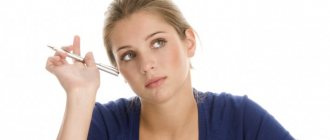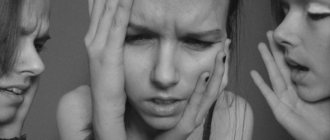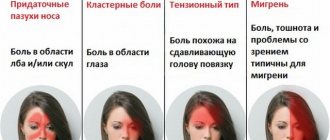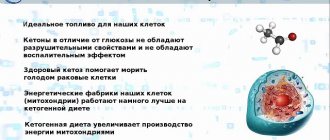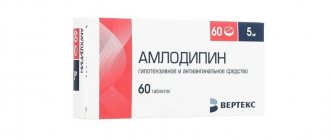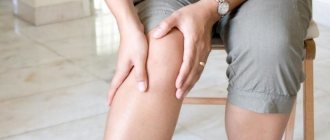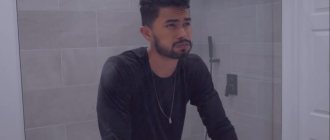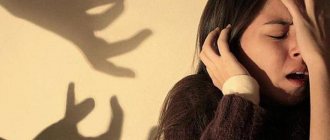Each of the two cerebral hemispheres (CB) is responsible for its own individual functions. For example, a person with a more functional left hemisphere is more likely to be right-handed, while a person with a more functional right hemisphere is more likely to be left-handed.
The left part of the brain is responsible for our logical (problem solving, calculations) and thinking abilities. The right side is more likely to be creative areas, for example, the development of an ear for music, the ability to draw, as well as the ability to solve problems, but with more non-standard methods. If we distinguish the types of thinking of the two parts of the brain, then the first (left) is abstract-logical, and the second (right) is spatial-imaginative.
There are numerous actions that are controlled by the cerebral hemispheres, such as swallowing functions, coughing, sneezing and others.
The cerebral hemispheres are classified into several sections called lobes. Each department is responsible for its own functionality. Therefore, in this article we will look in detail at the functionality of the lobes, as well as what negative reactions their damage can cause.
PSU structure
The structure of the cerebral hemispheres begins with their division into two massive sections, a distinct cleft, into both parts. In the middle part there is the corpus callosum, which is connected by dimensional connective tissue. Each hemisphere is based on lobes.
The separation of each lobe from the other occurs by grooves. There are 3 key grooves that separate certain lobes:
- Central, which separates the frontal from the parietal
- Lateral, which separates the temporal and parietal zones
- Parieto-occipital, separates the parietal and occipital zones from each other
The cerebral hemispheres contain convolutions, which are also separated by sulci. The hemisphere is covered by the cortex, which is a layer consisting of billions of neurons.
The cortex plays a vital role in regulating and coordinating all the necessary functions to maintain life, and also regulates the processes of nervous work of the central nervous system. The size of the cortex makes up 45% of the total volume of the BP.
The key feature of its structure is the horizontal, vertical and layer-by-layer interaction of its neurons. Areas of the cortex communicate both with each other and with subcortical structures.
The cortex is responsible for the formation of all functions of the human body, regulates their activity and shapes their development. It was the human cerebral cortex that reached its highest development.
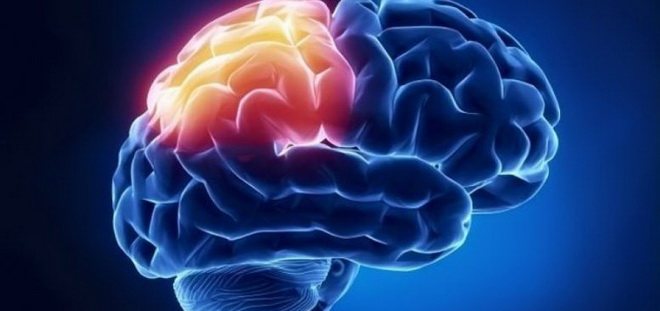
§ 46. Functions of the forebrain
Questions at the beginning of the paragraph.
Question 1. Where are perceived images recognized?
Perceived images are recognized in the central part of the diencephalon - the thalamus.
Question 2. Do the left and right hemispheres perform the same functions?
The left hemisphere is responsible for regulating the functioning of the organs of the right side of the body, and also perceives information from space on the right. In addition, the left hemisphere is responsible for the implementation of mathematical operations and the process of logical, abstract thinking; Here are the auditory and motor centers of speech, which provide the perception of oral speech and the formation of oral and written speech. The right hemisphere controls the organs of the left side of the body and perceives information from space on the left. Also, the right hemisphere is involved in the processes of imaginative thinking, plays a leading role in recognizing human faces and is responsible for musical and artistic creativity; it is also responsible for recognizing people by voice and perceiving music.
Questions at the end of the paragraph.
Question 1. What divisions are distinguished in the forebrain?
The forebrain consists of sections: the diencephalon and the cerebral hemispheres.
Question 2. What are the functions of the thalamus and hypothalamus?
The thalamus receives all information from the senses. Its significance is assessed. The thalamus transmits only important information to the cerebral cortex.
The hypothalamus regulates metabolism and energy, maintains homeostasis and controls the satisfaction of needs.
Question 3. Why is the surface of the hemispheres folded?
Due to the fact that the surface of the hemispheres is folded, the surface of the cerebral cortex increases.
Question 4. How is gray and white matter distributed in the cerebral hemispheres? What functions do they perform?
The surface of the cerebrum is formed by the cortex, which consists of gray matter. This is where the cell bodies of neurons are located. They are arranged in columns, forming several layers. Under the cortex is a white substance. In the depths of the hemispheres, among the white matter, there are clusters of gray matter - the subcortical nuclei. Neurons of the cerebral hemispheres are responsible for the perception of information entering the brain from the senses, control of complex forms of behavior, and participate in the processes of memory, mental and speech activity of a person. White matter consists of a mass of nerve fibers that connect cortical neurons to each other and to underlying parts of the brain.
Question 5. What are the functions of the old cortex?
The old cerebral cortex contains centers associated with complex instincts, emotions, and memory. The old cortex enables the body to respond correctly to favorable and unfavorable events. Information about experienced events is stored here.
Question 6. How are functions distributed between the left and right hemispheres of the cerebrum?
The left hemisphere is responsible for regulating the functioning of the organs of the right side of the body, and also perceives information from space on the right. In addition, the left hemisphere is responsible for the implementation of mathematical operations and the process of logical, abstract thinking; Here are the auditory and motor centers of speech, which provide the perception of oral speech and the formation of oral and written speech. The right hemisphere controls the organs of the left side of the body and perceives information from space on the left. Also, the right hemisphere is involved in the processes of imaginative thinking, plays a leading role in recognizing human faces and is responsible for musical and artistic creativity; it is also responsible for recognizing people by voice and perceiving music.
Question 7. Which connections in the body are called direct and which are called reverse?
Direct communication in the body is the path along which the signal goes from the brain to the organs; Feedback is the path through which information about the results achieved comes back to the brain.
Frontal and parietal lobes of the PD brain and their functions
Depending on the location, the lobes of the cerebral hemispheres are divided into:
Frontal
Located on the entire anterior part of the hemispheres. Separation from the parietal region occurs through the median, and from the temporal lateral groove. It has only 4 convolutions. The weight of the entire occupied area is approximately 500 g. Performs the following functions:
- Coordination of voluntary movements
- Regulation of the speech apparatus
- Regulation of thought processes
It is the middle gyrus of this part of the brain that is the central coordinating, cerebral part of spontaneous movements. The depth of the cortex of this gyrus is characterized by the beginning of the so-called pyramidal path, through which the formation and then transmission of impulses is carried out.
The motor center is located in the upper, posterior zone. It is this system that contributes to the implementation of voluntary motor skills, as well as maintaining muscle tone and body balance.
The middle, frontal gyrus, which is located in the posterior region, has an ocular and motor system, which is responsible for the simultaneous rotation of the head and eyes. The lower one has a speech and motor center.
Parietal
This area is formed in place of the upper and lateral sections of the hemisphere. Along with the frontal lobe, it also has a large occupied area.
The function of the parietal part is the analysis of sensory disorders. Depending on the location, the functions of the parietal part are as follows:
- Responsible for deep muscle and joint sensitivity, spatial perception (two-dimensional), sense of weight, motor volume, the ability to recognize things by palpation
- Automation of movements in the process of their repetition, learning throughout life (walking, eating, the ability to write, drive a vehicle, etc.).
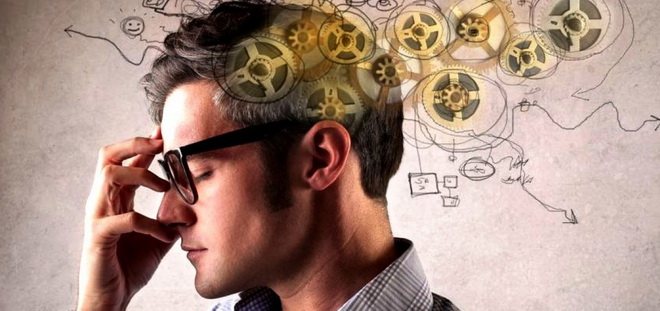
General
It is impossible to specifically develop the frontal lobes of the brain in children. There is a misconception in society that physical activity promotes increased blood circulation in the brain, thereby developing all areas of the brain. Physical activity fills the motor centers of the brain, while the rest of the brain rests
', because When performing different tasks, the brain uses specific centers, rather than the entire brain.
Based on the above, in order to determine exercises for the development of the frontal lobes, we need to find out what functions the frontal lobes are responsible for, with which we can develop the frontal lobes.
The frontal lobe, like others, consists of and substances.
Temporal and occipital lobes of PD and their functions
Temporal
The temporal lobes of the cerebral hemispheres have a much smaller area of distribution. The limiting groove on the side blocks its spread to the frontal and parietal zones. This part is formed in such a way that there are 3 main convolutions on the surface.
The temporal part is involved in the control and regulation of many different life processes. These include:
- Auditory functionality, which is provided by the processing and perception of auditory signals
- Conversion of vestibular data
- Regulation of visual functionality
- The posterior region has speech centers at its disposal
- The medial area controls the nervous system, is responsible for emotionality and behavior
- The hippocompal gyrus is responsible for the sense of smell and taste buds
The temporal lobes play a key role in the formation of complex types of mental processes, especially memory.
Occipital
It is located at the level of the back of the head in the posterior sections of the BP. It differs in that this department does not have clear boundaries of separation from other lobes. The structure of the grooves is characterized by variability and inconstancy. The key function of this part of the cerebral hemisphere is the transformation of visual data into perception.
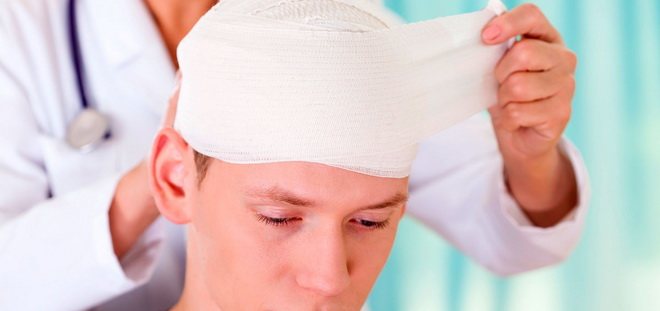
Limbic system
Limbic region
absent in reptiles.
It appears only in mammals. The limbic areas are responsible for attachment
(our connection with parents or caregivers),
memory
(especially factual and autobiographical),
evaluating meanings and creating
affect , and feeling
emotions
.
The limbic system is also the main regulator of hormonal functions.
-
hypothalamus
, which directly affects the physical parameters of the body.
The endocrine system, together with the influence of the brain on the immune system and the state of physical health of the body through the autonomic (autonomic) nervous system with its two departments - inhibitory (parasympathetic) and excitatory (sympathetic) - represents a direct mechanism through which the brain and body closely interact .
Limbic system
and
the brainstem
- subcortical formations - jointly influence our
motivations and
drives and are activated in response to the need for
survival, connection and meaning.
Assigned functions
Evolutionarily, it so happened that the active development of the frontal lobes is not associated with mental and intellectual activity. The frontal lobes arose in humans through evolution. The more a person could share food within his community, the more likely the community could survive. In women, the frontal lobes arose for the specific purpose of sharing food. The men got this area as a gift. Without those assigned tasks that lie on the shoulders of women, men began to use the frontal lobes in a variety of ways (thinking, building, etc.) to demonstrate Dominance.
Essentially, the frontal lobes are inhibitory centers
. Also, many people ask what the left or right frontal lobe of the brain is responsible for. The question is not posed correctly, because... in the left and right frontal lobes there are corresponding fields that are responsible for specific functions. Roughly speaking, the frontal lobes are responsible for:
- thinking
- coordination of movements
- conscious control of behavior
- memory and speech centers
- display of emotions
Symptoms of damage to the frontal lobe of the brain
When the nerve cells and pathways of the lobus frontalis of the brain are damaged, a motivational disorder called abulia occurs. People suffering from this disorder exhibit laziness due to a subjective loss of meaning in life. Such patients often sleep all day.
When the frontal lobe is damaged, mental activity aimed at solving problems and tasks is disrupted. The syndrome also includes a violation of the perception of reality, behavior becomes impulsive. Planning of actions occurs spontaneously, without weighing the benefits and risks, or possible adverse consequences.
Concentration of attention on a specific task is impaired. A patient suffering from frontal lobe syndrome is often distracted by external stimuli and is unable to concentrate.
At the same time, apathy occurs, loss of interest in those activities that the patient was previously interested in. When communicating with other people, a violation of the sense of personal boundaries is manifested. Possible impulsive behavior: flat jokes, aggression associated with the satisfaction of biological needs.
The emotional sphere also suffers: the person becomes unresponsive and indifferent. Euphoria is possible, which sharply gives way to aggressiveness. Injuries to the frontal lobes lead to changes in personality, and sometimes to a complete loss of its properties. Preferences in art and music may change.
With pathology of the right sections, hyperactivity, aggressive behavior, and talkativeness are observed. Left-sided lesions are characterized by general inhibition, apathy, depression, and a tendency to depression.
Symptoms of damage:
- Grasping reflexes, oral automatism.
- Speech impairment: motor aphasia, dysphonia, cortical dysarthria.
- Abulia: loss of motivation to perform.
Neurological manifestations:
- The Yanishevsky-Bekhterev grasp reflex occurs when the skin of the hand at the base of the fingers is irritated.
- Schuster reflex: grasping objects in the field of view.
- Hermann's sign: extension of the toes when the skin of the foot is irritated.
- Barre's symptom: if the arm is placed in an awkward position, the patient continues to support it.
- Razdolsky's symptom: when the hammer irritates the anterior surface of the leg or along the iliac crest, the patient involuntarily flexes and abducts the hip.
- Duff's sign: constant rubbing of the nose.
Mental symptoms
Bruns-Yastrowitz syndrome manifests itself in disinhibition and swagger. The patient lacks a critical attitude towards himself and his behavior, control over it, from the point of view of social norms.
Motivational disorders manifest themselves in ignoring obstacles to the satisfaction of biological needs. At the same time, concentration on life tasks is recorded very weakly.

